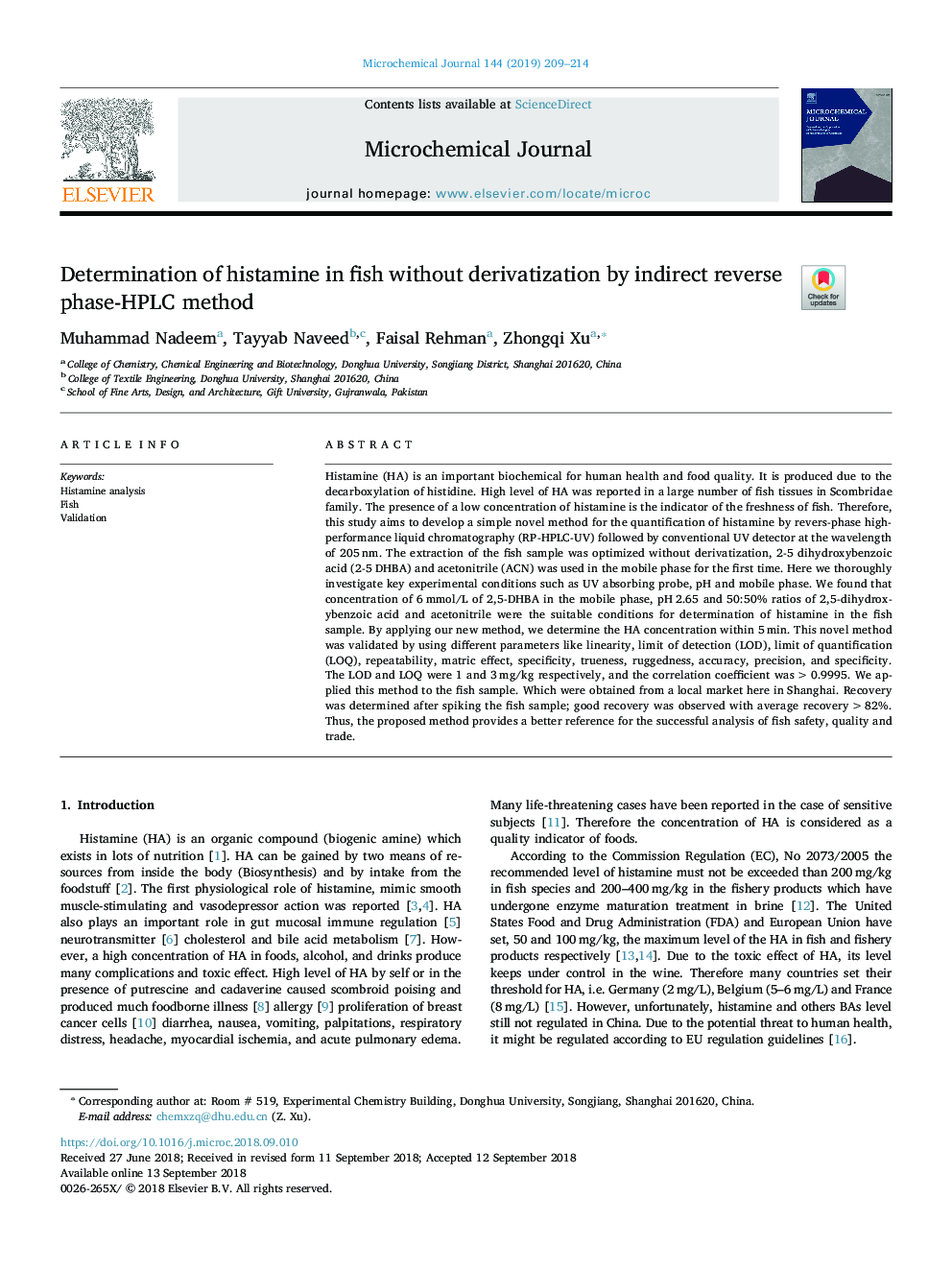| Article ID | Journal | Published Year | Pages | File Type |
|---|---|---|---|---|
| 10140973 | Microchemical Journal | 2019 | 6 Pages |
Abstract
Histamine (HA) is an important biochemical for human health and food quality. It is produced due to the decarboxylation of histidine. High level of HA was reported in a large number of fish tissues in Scombridae family. The presence of a low concentration of histamine is the indicator of the freshness of fish. Therefore, this study aims to develop a simple novel method for the quantification of histamine by revers-phase high-performance liquid chromatography (RP-HPLC-UV) followed by conventional UV detector at the wavelength of 205â¯nm. The extraction of the fish sample was optimized without derivatization, 2-5 dihydroxybenzoic acid (2-5 DHBA) and acetonitrile (ACN) was used in the mobile phase for the first time. Here we thoroughly investigate key experimental conditions such as UV absorbing probe, pH and mobile phase. We found that concentration of 6â¯mmol/L of 2,5-DHBA in the mobile phase, pHâ¯2.65 and 50:50% ratios of 2,5-dihydroxybenzoic acid and acetonitrile were the suitable conditions for determination of histamine in the fish sample. By applying our new method, we determine the HA concentration within 5â¯min. This novel method was validated by using different parameters like linearity, limit of detection (LOD), limit of quantification (LOQ), repeatability, matric effect, specificity, trueness, ruggedness, accuracy, precision, and specificity. The LOD and LOQ were 1 and 3â¯mg/kg respectively, and the correlation coefficient was >0.9995. We applied this method to the fish sample. Which were obtained from a local market here in Shanghai. Recovery was determined after spiking the fish sample; good recovery was observed with average recovery >82%. Thus, the proposed method provides a better reference for the successful analysis of fish safety, quality and trade.
Keywords
Related Topics
Physical Sciences and Engineering
Chemistry
Analytical Chemistry
Authors
Muhammad Nadeem, Tayyab Naveed, Faisal Rehman, Zhongqi Xu,
